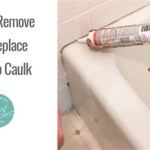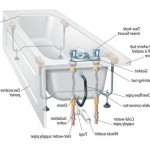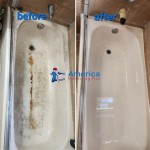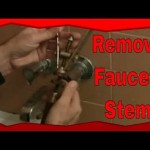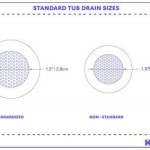Cleaning Water Jets In Your Bathtub: A Comprehensive Guide
Hydrotherapy bathtubs, equipped with water jets, offer therapeutic benefits by massaging the body with pressurized water. Over time, these jets can accumulate soap scum, body oils, mineral deposits, and bacteria, compromising their performance and potentially posing health risks. Regular and effective cleaning is crucial to maintain the hygiene and functionality of these systems.
The accumulation within the jet system can lead to several problems. Reduced water pressure indicates partially blocked jets, diminishing the massage effect. Foul odors may emanate from the buildup of organic matter and bacteria. Furthermore, the presence of bacteria and mold present a health hazard, potentially causing skin irritation or infections, especially for individuals with sensitive skin or weakened immune systems. Therefore, proactive cleaning is essential to prevent these issues and ensure a safe and enjoyable bathing experience.
This article provides a detailed guide to cleaning water jets in a bathtub, covering necessary preparations, cleaning procedures, and preventative measures. The information aims to offer practical solutions for homeowners seeking to maintain their hydrotherapy bathtubs in optimal condition.
Preparing for the Cleaning Process
Prior to initiating the cleaning process, several steps must be taken to ensure safety and effectiveness. Gathering the necessary materials and understanding the manufacturer's instructions are paramount.
First, assemble all required cleaning supplies. These include a bathtub cleaner specifically designed for jet systems (or a mixture of white vinegar and water, as explained later), a soft-bristled brush (an old toothbrush works well for small crevices), a clean microfiber cloth or sponge, a measuring cup, and safety gloves. The gloves protect skin from potential irritants in the cleaning solutions.
Next, consult the bathtub's user manual. This document provides specific cleaning recommendations, warnings, and instructions tailored to the particular model. Adhering to these guidelines is crucial to avoid damaging the jet system or voiding the warranty. If the manual is unavailable, search the manufacturer's website using the model number, often located on a sticker near the pump or access panel.
Finally, take note of the jet system's components. Identify the location of all jets, the water inlet, and the circulation pump. A basic understanding of the system's layout will facilitate a thorough cleaning.
The Cleaning Procedure: A Step-by-Step Guide
The cleaning procedure involves filling the bathtub, adding the cleaning solution, circulating the mixture through the jets, draining the tub, and rinsing the system thoroughly. The following steps provide a detailed explanation of each stage.
Begin by filling the bathtub with hot water. The water level should be high enough to completely submerge all of the jets. Hot water aids in dissolving soap scum and loosening mineral deposits. Add the cleaning solution according to the manufacturer's instructions. If using a vinegar and water solution, a common recommendation is one cup of white vinegar per gallon of water. For heavily soiled jets, a stronger concentration of vinegar may be necessary, but caution should be exercised to avoid damaging any sensitive components. Baking soda can be added as well to help with removing residue and mineral deposits, usually 1½ cup per gallon of water.
Once the cleaning solution is added, turn on the jet system. Allow the jets to circulate the cleaning solution for approximately 15-20 minutes. This allows the solution to penetrate the interior of the jets and pipes, effectively dislodging accumulated debris. Monitor the water for any signs of discoloration or floating debris, indicating the effectiveness of the cleaning solution.
After the circulation period, turn off the jets and allow the cleaning solution to soak for an additional 30-60 minutes. This extended soaking period allows the solution to further break down stubborn deposits. For particularly stubborn stains or buildup, consider allowing the solution to soak overnight. However, this should only be done with diluted solutions and after consulting the bathtub’s user manual to ensure no damage will occur to the system's components.
Drain the bathtub completely after the soaking period. Once drained, thoroughly rinse the bathtub and the jet system with clean, cold water. Refill the tub with cold water and activate the jets for a few minutes to flush out any remaining cleaning solution and dislodged debris. Repeat this rinsing process until the water runs clear and no trace of the cleaning solution remains.
Inspect the individual jets for any remaining debris. Use a soft-bristled brush, such as an old toothbrush, to scrub around each jet nozzle. Pay particular attention to small crevices and openings where debris may accumulate. If necessary, a small, thin tool, such as a toothpick or safety pin, can be used to gently dislodge any stubborn particles. However, exercise extreme caution to avoid scratching or damaging the jet nozzles. After scrubbing, rinse the jets again with clean water.
Finally, wipe down the entire bathtub surface with a clean microfiber cloth or sponge. This removes any residual water and cleaning solution, leaving the bathtub clean and dry. Pay attention to the area around the jets, ensuring no moisture or debris remains. Leaving the surface dry helps prevent the regrowth of mold and bacteria.
Preventative Measures and Maintenance
Regular maintenance is the key to preventing the accumulation of debris and ensuring the long-term functionality of the jet system. Implementing the following preventative measures will minimize the need for extensive cleaning and extend the life of the bathtub.
One of the most effective preventative measures is to rinse the bathtub thoroughly after each use. This removes soap scum and body oils before they have a chance to accumulate in the jets and pipes. After each bath, drain the water and spray the bathtub surface, including the jets, with clean water. Wipe down the surface with a clean cloth to remove any remaining residue.
Consider using bath products that are specifically designed for hydrotherapy bathtubs. These products are typically less likely to produce excessive soap scum or leave behind residue. Avoid using bath oils, bubble baths, and other products that can clog the jets and pipes. If using such products, increase the frequency of cleaning to compensate for the increased risk of buildup.
Regularly clean the bathtub's filter, if applicable. Some hydrotherapy bathtubs are equipped with a filter to remove debris from the circulating water. Consult the user manual for the location of the filter and the recommended cleaning schedule. Typically, the filter should be cleaned every one to three months, depending on usage. A clogged filter reduces water pressure and can damage the pump.
Periodically run the jets with cold water for a few minutes after each use. This helps to flush out any remaining soap scum and debris from the system. Cold water is particularly effective at removing certain types of residue that may not dissolve readily in hot water. This simple step can significantly reduce the buildup in the jets and pipes.
Maintain the proper water chemistry. Hard water can contribute to mineral buildup in the jets and pipes. Consider using a water softener to reduce the mineral content of the water. Regularly test the water pH and alkalinity levels to ensure they are within the recommended range. Maintaining proper water chemistry not only protects the bathtub but also enhances the effectiveness of bath products.
By following these preventative measures and the detailed cleaning procedure outlined above, homeowners can effectively maintain their hydrotherapy bathtubs, ensuring a safe, hygienic, and enjoyable bathing experience. Consistent maintenance significantly reduces the risk of costly repairs and extends the lifespan of the bathtub and its jet system.

How To Clean Your Jetted Whirlpool Tub Get The Mold Out

Are You Deep Cleaning Your Jetted Tub This Needs Done Whether Use Tiktok

Cool Your Jets Jetted Tub Cleaning House Work

How To Clean A Jacuzzi Bathtub Shiny Whirlpool In 3 Steps

How To Clean Bathtub Jets So You Can Soak Without Stress Hometalk

How To Clean Whirlpool Jets With Oxiclean

How To Clean Bathtub Jets Thoroughly In Simple Steps Lovetoknow

How To Clean Your Hot Tub Jets From Sunny S Pools More

How To Clean Your Jetted Tub Kohler Walk In Bath

How To Clean A Jetted Tub 14 Steps With Pictures Wikihow
Related Posts

